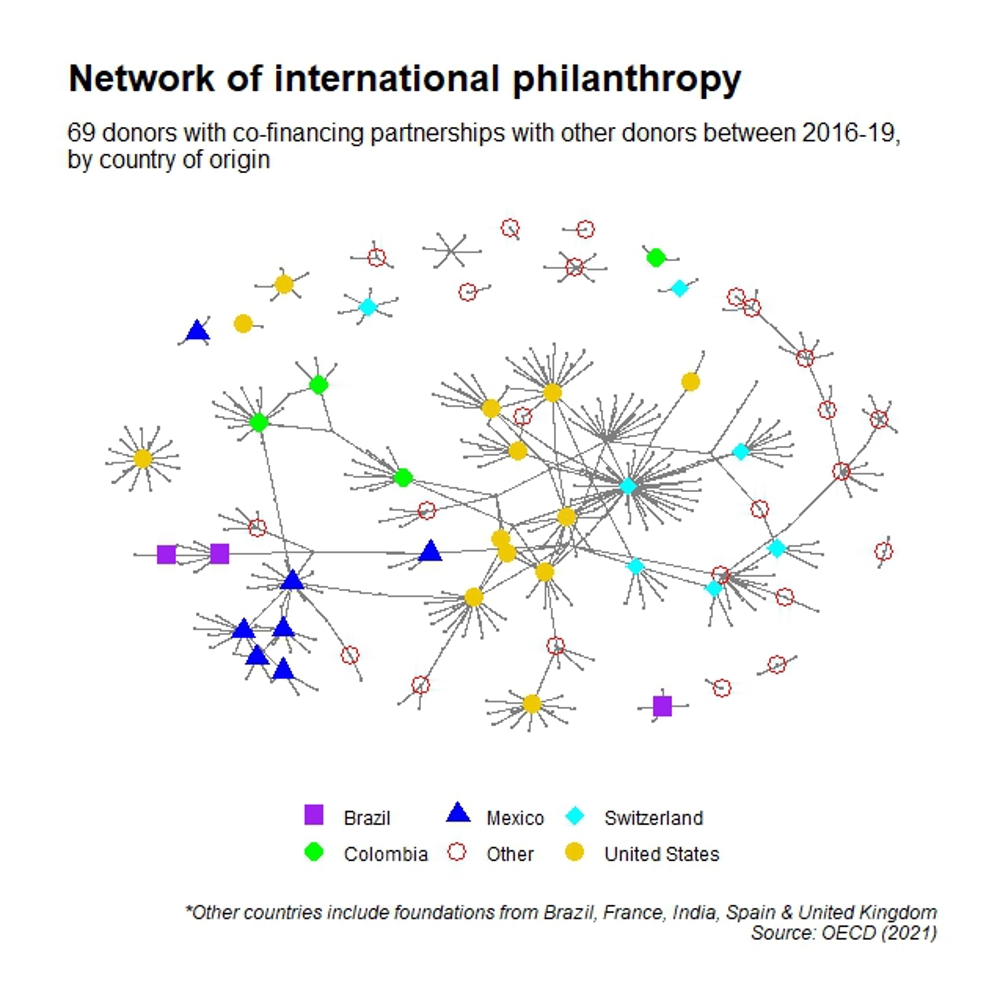Nelson Amaya and Rossana Tatulli from the OECD Centre on Philanthropy on how sharing information fosters collaboration in philanthropy for development.
Private philanthropy is playing an increasingly important role in development. The most recent OECD Private Philanthropy for Development report shows that, between 2016 and 2019, a group of 205 large philanthropic organisations mobilised more than US$42.5bn in funding for development causes, close to $10bn a year.
In comparison to Official Development Assistance (ODA), which reached $179bn in 2021, this amount remains small – but it clearly shows that philanthropy is moving out from the fringes to become a significant contributor in the development space.
Moreover, in countries like India, China and Mexico, domestic philanthropy has already surpassed what comes into each country. This underscores the role philanthropy is playing in emerging markets, in areas as diverse as education, health, agriculture, gender equality and advancing scientific research.
While some philanthropic organisations work openly, collaboratively, and engage with all levels of development (governments, businesses, and civil society), reliable, comparable, and publicly available information on philanthropic funding, priorities and behaviours remains surprisingly scarce.
Out of 103 global foundations we surveyed, just 43 share information about their programmes, and of those, only 33 shared details on their evaluations.
The lack of awareness among donors about each other’s giving, and lack of data on the impact of their giving, ultimately hinders philanthropy from doing good better. What will it take to turn the tide? The answer lies in the formation of communities of donors.

"Philanthropists respond to collaborative drives, and often prefer to work together instead of individually."
Philanthropists respond to collaborative drives, and often prefer to work together instead of individually. The extent of that collaboration rests on how much they know and trust each other, and whether external factors push for collaboration that wouldn’t happen otherwise. Through collaborating, foundations can reach goals they could not otherwise achieve alone.
However, despite the benefits these collaborations offer and the growing interest in partnering, there is a striking paradox: almost half of philanthropic organisations we surveyed cited “identifying funding partners with aligned interests” as the main barrier to collaborative working, despite many of these donors acknowledging they were “reluctant to share information”.
When do communities of donors form? The OECD survey also sheds a light on this. Some philanthropic organisations are well connected to each other by regional, thematic, and common grantees. Our survey shows that 69 out of 103 foundations already co-finance projects and grantees with others, and more co-financing happens where more data is publicly available.
During Covid-19, for example, institutional donors, corporates, and family funds came together in Mexico to create Ensamble, to create a platform to pool resources and strategy to help those most affected by the pandemic. The ClimateWorks Foundation is another example, pooling together resources from philanthropic organisations to coordinate on fighting climate change.
More collaborative vehicles for philanthropy already exist, and many more will be created in the coming years.
Some foundations in the Middle East are already working together, and this collaborative approach is supported by platforms such as Circle, a partnership between the Pearl Initiative and Philanthropy Age, and the Arab Foundations Forum (AFF). Ultimately, that will show whether the sector is ready to work together.


About the writers
Nelson Amaya leads data collection and surveying at the OECD Centre on Philanthropy, where Rossana Tatulli is a research intern. This article reflects the opinions of the authors and not the position of the OECD.




